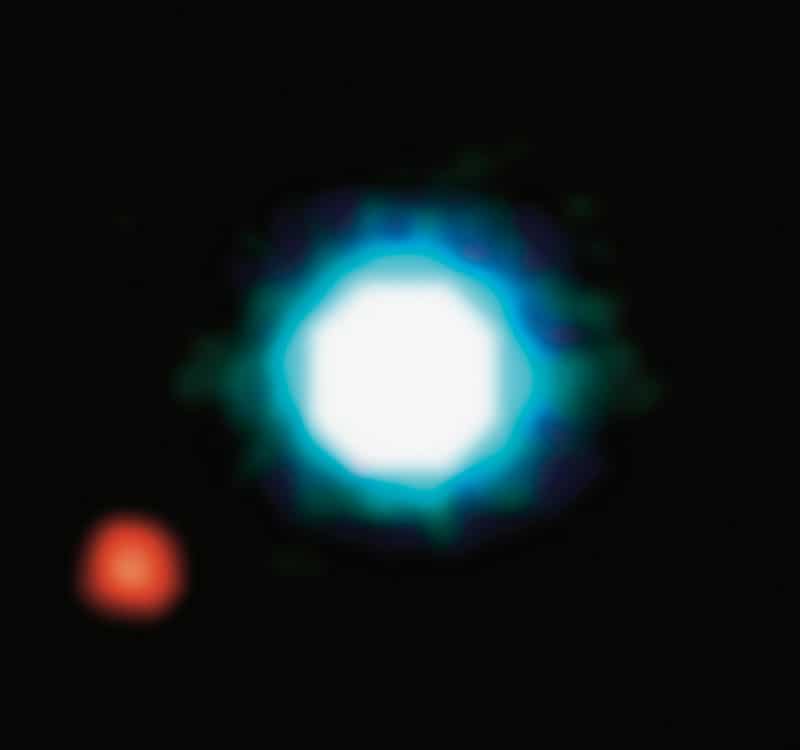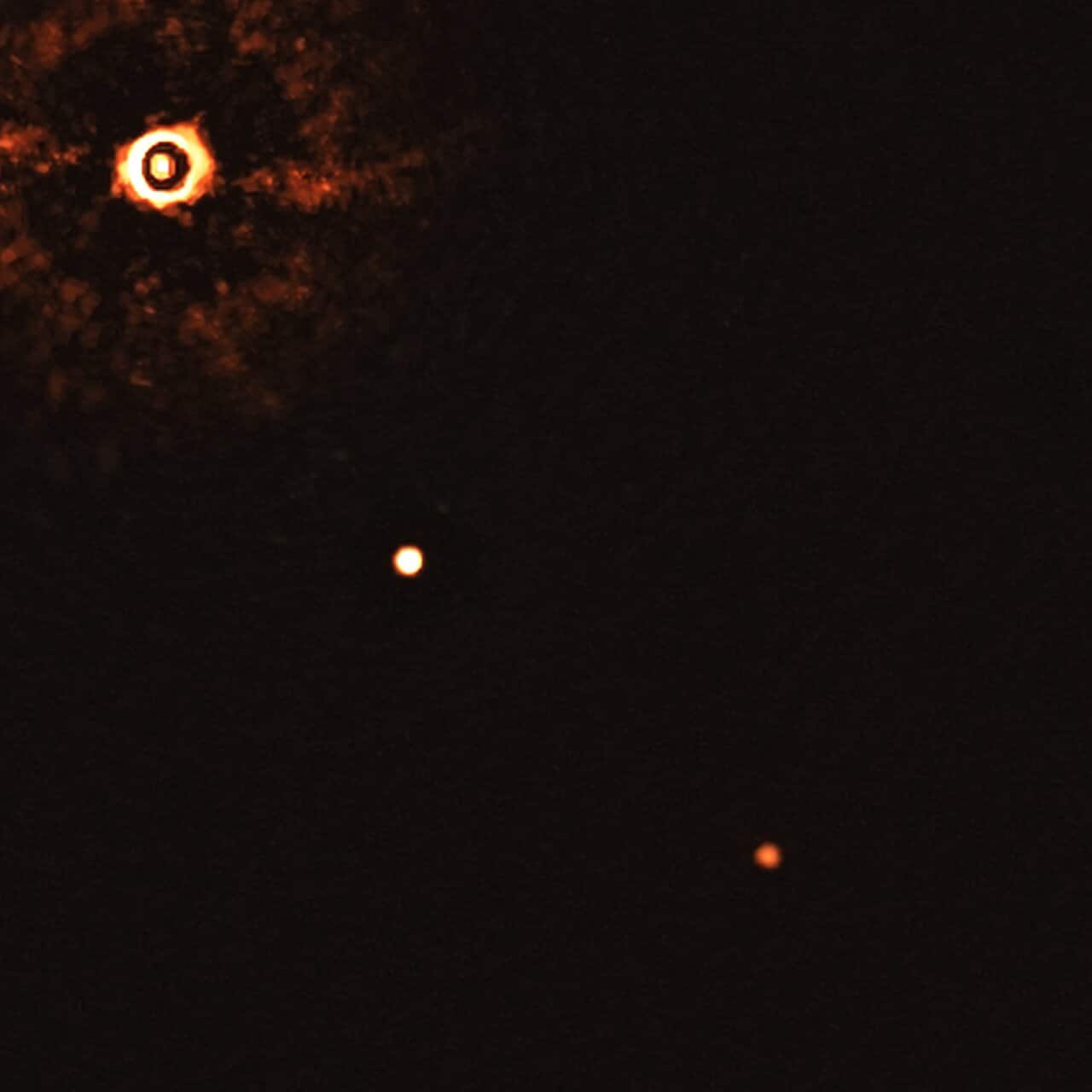

This weekend we celebrate that the very first exoplanet was found thirty years ago. The space photo of the week is this shot of 2M1207b. It is the first ever photo of a planet near another star.
Before the first exoplanet was photographed in 2004, astronomers found hundreds of other exoplanets. Because there are many different methods to find exoplanets, such as measuring whether a star’s light is fading (often caused by a planet blocking some of the starlight) or seeing if a star wobbles (due to a planet’s gravity). But why wasn’t a photo taken of a planet outside the solar system in those 12 years?
It took twelve years, because it is very difficult to photograph an exoplanet. This has to do with three points: size, distance and brightness. Planets are very small compared to stars. In addition, the distance between exoplanets and Earth is many light years, making them almost invisible. After all, stars give light, while planets only reflect light. A star emits so much light that the exoplanet disappears. To photograph the planet, the starlight must be stopped – for example with a coronagraph – but then the exoplanet must be large enough and not orbit too close to the parent star.
First ever family portrait
In 2004 we finally managed to capture a planet on the sensitive plate. The photo was taken through one of the four large reflecting telescopes of the Very Large Telescope. The planet 2M1207b orbits a brown dwarf star (2M1207). A brown dwarf is a failed star. At birth, there is not enough matter to initiate fusion of protons. Brown dwarfs do not emit light, but only shine in infrared light.

The planet in the photo above is five times more massive than Jupiter. The distance between the brown dwarf and the massive Jupiter-like planet is about eight billion kilometers: 55 times the Earth-Sun distance and twice the Neptune-Sun distance. Actually, this object meets all ‘conditions’ as stated in the third paragraph. The exoplanet is relatively large, there is a great distance from the parent star, the star itself gives little (or in this case no) light and finally the distance to Earth is relatively small: 160 light-years.
Scientists can’t get sharp pictures of the planet, but they can use other techniques to learn more about 2M1207b. In 2016, scientists used the Hubble telescope to map this ten-million-year-old planet. The exoplanet’s atmosphere is so warm that rocks and glass melt, evaporate and come back down as ‘rain’. It also takes the exoplanet ten hours to circle its axis.
First photo of multiple exoplanets near one star
Since the first photo of an exoplanet, more images have been made of other exoplanets. The most special photo below is a portrait of sun-like star TYC 8998-760-1 and two exoplanets. This image was also taken by the Very Large Telescope. “This star is a very young version of our own sun,” researcher Alexander Bohn said last year. “This discovery is a snapshot of an environment very similar to our solar system, but at a much earlier stage of development.”

In the future, we may see even more photos of exoplanets. The James Webb telescope will be commissioned this summer. This is the largest space telescope ever. Astronomers will undoubtedly use this space telescope to study nearby stars in order to get closer to answering one of the biggest questions: are we alone in this universe?